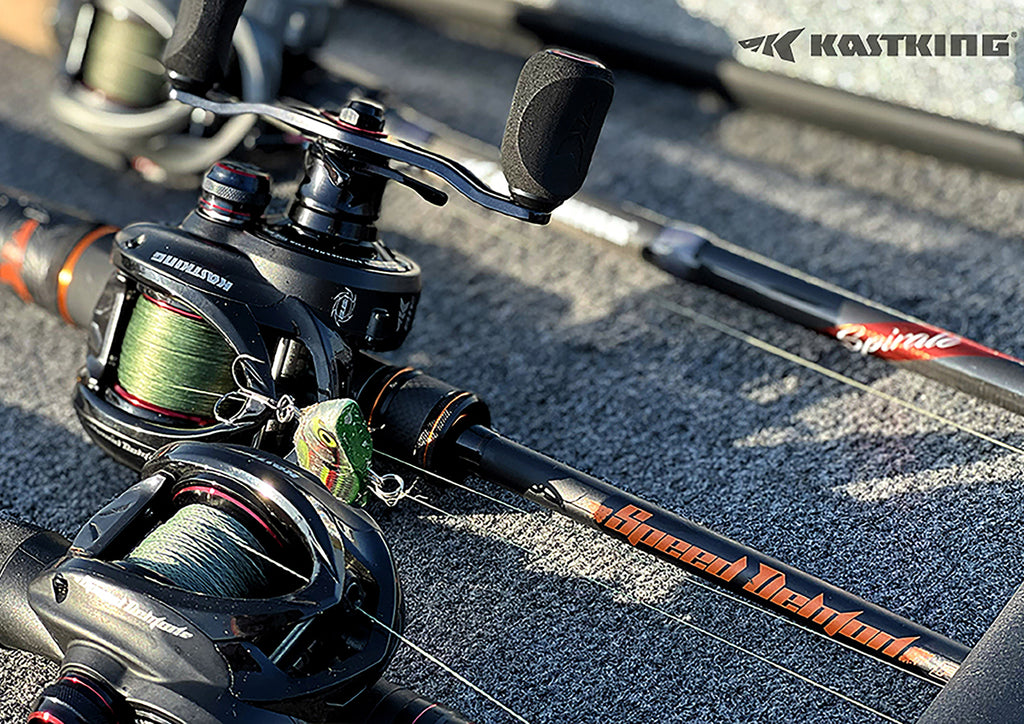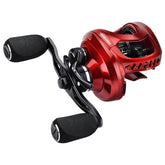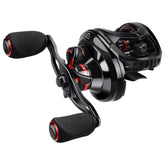
What You Need to Know About Gear Ratio
Understanding exactly what gear ratio is on a reel is vital when looking to make a purchase It seems that all new ads and campaigns for releases include the name of the reel and immediately after, the gear ratio. It’s obviously an important feature, but what does it really mean? Equally important is understanding what a gear ratio is not. Might sound silly and intuitive but many might misinterpret what gear ration actually is so I thought I would jot down some points for us to discuss.
Let’s jump right in and talk about what gear ratio is in its most basic definition. The gear ratio of any reel is the times the spool of a reel completely rotates per a single rotation of the handle. For example, a reel with 10.5:1 (Speed Demon Elite Bait caster) is indicating that the spool will spin 10.5 times each time the handle is turned one revolution. So at this point, one might be thinking that the gear ratio would be an indicator of speed. Well, it CAN be for sure. All things being equal, sure a 10.5:1 reel would be faster in line intake than a reel of say 6.6:1. Keep your eye on the keywords though, all things being equal. Let’s say that the spool of the 10.5:1 is measured at 0.125” in diameter and the 6.6:1 spool is 2” in diameter. Is 10.5:1 reel still faster? The point is that there are other factors that may play into determining the facets of a reel that you may be looking for. The key piece of information on line intake speed is normally depicted as Inches per turn or IPT. Normally measured in inches like one the Speed Demon elite as 42 IPT, which is translated as 42 Inches per turn, crazy fast!

Some of the mechanics out there might be thinking just like on any bike or car, there is a high speed is gear ratio also an identifier to the torque of the reel? Well, here we have some terms used in physics, in the use of a system like a reel the torque of the reel can also be termed as the power of the reel. Like opposing forces, you normally have high speed with low torque or high torque and low speed just like you do on any 10-speed bike or driving a stick shift car. Have you ever seen a competitor in a bass fishing tournament show their gear? They normally have a wide variety of rods and reels and matched up throwing different types of baits and with keyed in gear ratio on their reels to match the kind of fishing conditions they are likely to encounter. Okay so back to the gear ratio of a reel, we spoke of the high gear ratios so now let’s look at a low gear ratio, say the KastKing Mega Jaws baitcasting reel with a low ratio like 5.4:1. Is this low gear ratio an indicator of the torque of the reel? Again, it CAN be for sure. Let’s make the statement again, all things being equal, a 5.4:1 geared reel should have more power than a 10.5:1 gear ratio reel. The catch this time? Remember that the gear ratio is made on two pieces on a reel, the spool and the handle. Well, the torque of the reel is dependent on the length of the handle. The longer the handle, the more power or torque will be exerted on a rotational axis, being the gearing for the spool. With the same amount of force that is used on spinning the handle of a reel you will get more torque with a lower gear ratio reel. You can get the same amount of torque on a higher geared reel, but it will just take more force or what the angler will feel and need to exert.

You may be thinking now if there are options for a consumer, maybe the best of both worlds? Some may want speed at times and when you may have hooked up to a huge fish to be able to be able to fight the monster without just using the rod to pull the fish in. Have no fear good people, modern technology has a solution for you! The concept of double gearing is available in many high end reels. You would be at a gear ratio like 6.0:1 then be able to drop down to like 2.8:1 to winch in some of the big boys. It’s a great option and many fisherman are certainly happy to have that option when it becomes needed. If you really are looking for some options there are even three speeds coming onto the market!
With all this talk about power and torque it might be good to mention at this point about another aspect of gears and what gear ratio is not. The gear ratio is also not a measure of the strength of the gears. It is important to know that when we are looking at the gear ratio the gears that are being used need to be the same height and spacing between the teeth or the gear teeth will not intermingle properly. When a reel manufacturer designs a reel, it is vital for them to balance between the size, material and teeth of the gears. The thinner the teeth are of a gear the stronger the material has to be to prevent breaking or sheering.
I hope this provides you some insight as to what gear ratio is and is not about. In the end, what an angler looks for is completely personal preference. Dialing in what works for you in the environment you are fishing and what you are fishing for will all play into your decision but finding the perfect match in your reel will make your fishing all that much more enjoyable.












